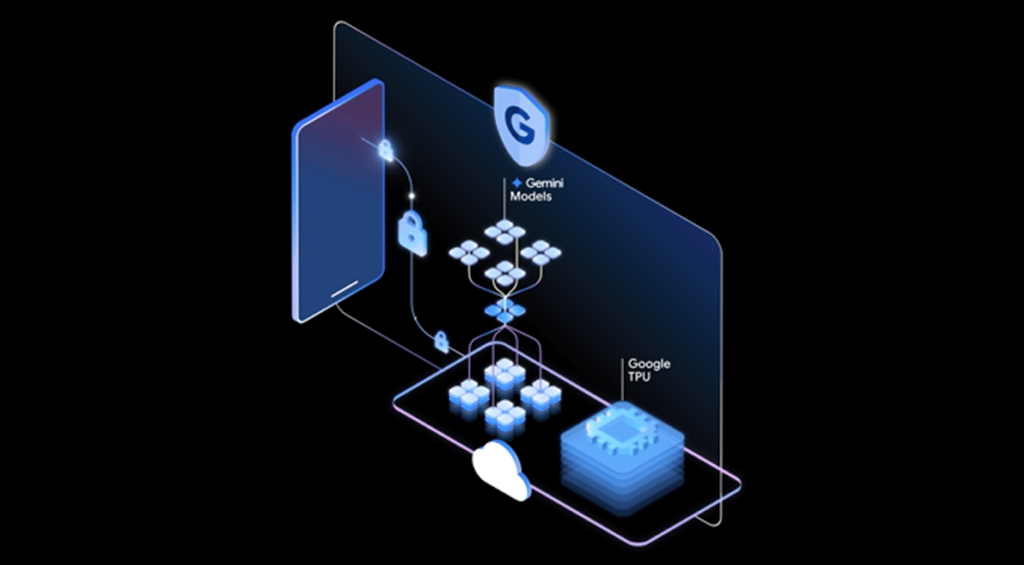Amazon Web Services cloud platform remains firmly perched at the number one spot, attaining sales in the fourth quarter of 2017 that exceed those of its four nearest competitors, specifically Microsoft, IBM, Google and Alibaba, combined. This is detailed in a recent analysis of the cloud infrastructure services market from Synergy Research. In this case, the cloud infrastructure market includes infrastructure as a service (IaaS) and platform as a service (PaaS) and hosted private cloud services.
Cloud Storage and Backup Benefits
Protecting your company’s data is critical. Cloud storage with automated backup is scalable, flexible and provides peace of mind. Cobalt Iron’s enterprise-grade backup and recovery solution is known for its hands-free automation and reliability, at a lower cost. Cloud backup that just works.
SCHEDULE FREE CONSULT/DEMO
Overall, the market now generates over $13 billion a quarter. To keep the revenues rolling in, AWS has been looking beyond the IaaS and PaaS offerings that have propelled it to the top of the cloud-computing market and into big data analytics, artificial intelligence (AI) and the Internet of Things (IoT). Here’s what AWS has to offer.
AWS for Big Data Analytics
Amazon EMR (Elastic MapReduce) service is a low-cost solution for businesses that want to launch a Hadoop cluster. The company charges as little as 15 cents per hour for a 10-node Hadoop cluster.
Naturally, Hadoop isn’t the only distributed big data framework in town. Amazon EMR can also be used to run Apache Spark, Flink, HBase and Presto, offering enterprises plenty of choices on which big data technology foundation to rest their advanced analytics operations.
Next, Amazon Elasticsearch Service offers real-time analytics capabilities, enabling businesses to gather insights from varied and vast sources of data. The service can be used to power full-text search applications that can help users find the proverbial needle in a haystack within an expansive product catalog or enable real-time application monitoring on apps and websites, among other use cases.
Amazon Athena, an interactive query service, is a serverless offering that can be used to analyze data stored in Amazon S3 (Simple Storage Service). Users need only point Athena to their data, define a schema and run queries using standard SQL, all without the costly and time-consuming ETL (extract, transform and load) processes that are typically required to prepare data for analysis.
To help businesses make sense of streaming data, information that continually pours in from mobile apps, IoT devices and countless other sources, Amazon offers a trio of real-time big data analytics services.
Amazon Kinesis Data Firehose allows users to load streaming data into their S3 accounts and other repositories, ultimately enabling analytics in near real-time. It supports Amazon S3, Amazon Redshift, Amazon Elasticsearch Service and Splunk, collecting and transformation data into formats that help power up-to-the-minute business intelligence dashboards.
Organizations looking to build their own streaming data processing and analytics applications can use the Amazon Kinesis Data Streams service. According to Amazon, it can capture and store terabytes of data per hour from IT logs and social media streams, among the hundreds of thousands of data sources that the service can handle.
Echoing Amazon Athena, Kinesis Data Analytics makes it possible to process streaming data using SQL. It integrates with Kinesis Data Firehose and Kinesis Data Streams and its output can be sent to Amazon S3, Redshift, Elasticsearch Service or custom destinations.
AWS for IoT Deployments and Management
Amazon wants to help enterprises get their IoT device fleets under control with AWS IoT Core. The service enables businesses to connect and manage their “things” and ensure that the data and messages they generate reaches the intended destination in a secure and reliable manner. According to Amazon, the service can “support billions of devices and trillion of messages,” enough for even the most ambitious enterprise IoT deployments.
Relatedly, businesses can use AWS IoT Device Management to onboard, monitor and manage IoT devices at scale. Users can register their devices in bulk, organize them into groups and issue updates to individual devices or multiple ones within a group.
Tackling one of the thornier aspects of the IoT, AWS IoT Device Defender helps ensure that devices stick to their security policies. It continually monitors devices and alerts administrators when a device is behaving strangely, like flooding the internet with outbound traffic, which may indicate that it got roped into a DDoS attack or other nefarious activity.
Somewhat overlapping with the company’s streaming and big data analytics offerings, AWS IoT Analytics can also help businesses turn IoT data into insightful information. Currently in beta, its built-in IoT Analytics SQL query engine allows users to run ad-hoc queries while its time-series analytics capabilities help businesses uncover performance, usage and sensor trends over time.
For edge-computing scenarios that capitalize on the processing power contained in IoT devices, there’s AWS Greengrass. Apart from local processing, it enables data caching and syncing, along with device messaging and running machine learning inference workloads.
Businesses wishing that they had Amazon Dash buttons of their own can make it happen with AWS IoT 1-Click. The service allows buttons, badges, and other single-purpose devices to trigger functions in AWS Lambda, the company’s serverless compute offering. To help companies get started, Amazon also offers programmable Dash hardware called AWS IoT Button.
Companies that want to take a more hands-on approach to delivering IoT devices of their own can use Amazon FreeRTOS. The operating system runs on microcontrollers with limited compute power and memory, enabling them to connect to the cloud and light up IoT scenarios.
AWS Doubles Down on AI
Amazon made a big push into AI-powered cloud applications in the waning months of 2017. In the fourth quarter alone, it launched a quartet of AI services aimed at helping developers build smarter apps.
“AWS introduced four Artificial Intelligence (AI) services that allow developers to build applications that emulate human-like cognition: Amazon Transcribe for converting speech to text; Amazon Translate for translating text between languages; Amazon Comprehend for understanding relationships and finding insights within text; and Amazon Rekognition Video, a deep-learning powered video analysis service that tracks people, detects activities, and recognizes objects, celebrities, and inappropriate content,” stated Amazon in a Feb. 1 earnings release.
They join other services, including a deep learning image analysis system called Amazon Rekognition and Amazon Lex, a chatbot builder. Developers can also turn text into natural-sounding speech with Amazon Polly, which is based on the technology that gives Alexa her voice.
Amazon also announced SageMaker, a managed service aimed at data scientists and AI developers that helps simplify the process of building, training and deploying machine learning models.
As discussed in a previous Datamation article on deep learning’s role in the modern enterprise, Amazon offers preconfigured AMIs (Amazon Machine Images) that developers can use to hit the ground running.
They consist of EC2 instances with popular deep learning frameworks like Apache MXNet, Gluon and others. To sweeten the deal, AWS Deep Learning AMIs are free. The only costs incurred are for the resources they use.
Betting that a big part of the AI technology market will involve visual information, Amazon recently introduced AWS DeepLens, which the company is billing as the world’s first deep-learning enabled video camera for developers. Aimed at helping coders gain new deep learning skills or extend their talents into the realm of video analysis, the $249 camera ships on April 14.
Pedro Hernandez is a contributing editor at Datamation. Follow him on Twitter @ecoINSITE.
-
Huawei’s AI Update: Things Are Moving Faster Than We Think
FEATURE | By Rob Enderle,
December 04, 2020
-
Keeping Machine Learning Algorithms Honest in the ‘Ethics-First’ Era
ARTIFICIAL INTELLIGENCE | By Guest Author,
November 18, 2020
-
Key Trends in Chatbots and RPA
FEATURE | By Guest Author,
November 10, 2020
-
Top 10 AIOps Companies
FEATURE | By Samuel Greengard,
November 05, 2020
-
What is Text Analysis?
ARTIFICIAL INTELLIGENCE | By Guest Author,
November 02, 2020
-
How Intel’s Work With Autonomous Cars Could Redefine General Purpose AI
ARTIFICIAL INTELLIGENCE | By Rob Enderle,
October 29, 2020
-
Dell Technologies World: Weaving Together Human And Machine Interaction For AI And Robotics
ARTIFICIAL INTELLIGENCE | By Rob Enderle,
October 23, 2020
-
The Super Moderator, or How IBM Project Debater Could Save Social Media
FEATURE | By Rob Enderle,
October 16, 2020
-
Top 10 Chatbot Platforms
FEATURE | By Cynthia Harvey,
October 07, 2020
-
Finding a Career Path in AI
ARTIFICIAL INTELLIGENCE | By Guest Author,
October 05, 2020
-
CIOs Discuss the Promise of AI and Data Science
FEATURE | By Guest Author,
September 25, 2020
-
Microsoft Is Building An AI Product That Could Predict The Future
FEATURE | By Rob Enderle,
September 25, 2020
-
Top 10 Machine Learning Companies 2020
FEATURE | By Cynthia Harvey,
September 22, 2020
-
NVIDIA and ARM: Massively Changing The AI Landscape
ARTIFICIAL INTELLIGENCE | By Rob Enderle,
September 18, 2020
-
Continuous Intelligence: Expert Discussion [Video and Podcast]
ARTIFICIAL INTELLIGENCE | By James Maguire,
September 14, 2020
-
Artificial Intelligence: Governance and Ethics [Video]
ARTIFICIAL INTELLIGENCE | By James Maguire,
September 13, 2020
-
IBM Watson At The US Open: Showcasing The Power Of A Mature Enterprise-Class AI
FEATURE | By Rob Enderle,
September 11, 2020
-
Artificial Intelligence: Perception vs. Reality
FEATURE | By James Maguire,
September 09, 2020
-
Anticipating The Coming Wave Of AI Enhanced PCs
FEATURE | By Rob Enderle,
September 05, 2020
-
The Critical Nature Of IBM’s NLP (Natural Language Processing) Effort
ARTIFICIAL INTELLIGENCE | By Rob Enderle,
August 14, 2020
SEE ALL
CLOUD ARTICLES









